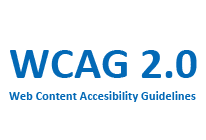
What is Accessibility?
As time goes by, the technology implemented on the software projects improves but also changes that way we access it. It requires a lot of effort to create a technology or website that can be used by everyone especially those with special needs. Before we dive into what is Accessibility Testing, let’s first understand what is Accessibility in general and why every company needs to incorporate this into their project.
Accessibility is a practice that everyone regardless of their disability, can have access to the system ensuring there are no barriers that prevent interaction with.
In other words, Making sure that everyone including individuals with disabilities can have access and can use the web as a normal user should. It is quite an important part of the development process and it’s a vital step of the STLC. Many companies today don’t take this into consideration when building a system for their customers. By covering accessibility as part of your application, you offer individuals with disabilities to use it. This means, more traffic, more market reach, and more profit.
How to implement Accessibility?
To have a fully accessible application, few things need to be considered first. Developers must be familiar with the accessibility guidelines when creating the application.
The guidelines are:
- Make sure that the application is keyboard accessible
- Every image needs to have an alt tag
- Every input field needs to have a corresponding label tag
- Choose the colors carefully
- Heading structure is ordered
- All links need to have an explanatory description
- Enable resizable text
- Do not use automatic population
- Create our forms or accessibility
All these points are a must when developing an application from scratch.
Many individuals rely on assistive technologies (screen readers for example) that use keyboard-only navigation. It must be possible to use all of your application features via a keyboard. Also, every image needs to have an alternative text in order to convey that information back to the user.
When it comes to inputs, one thing that we need to pay attention to is the labels because when a user navigates to the input, the assistive technology must read the label (meaning) of that input to the user in order to know what data to enter. Basically everything from structured HTML for user webpage coordination, simple forms, easy navigation, skip to content navigation, to color contrast needs to be covered so that the application can be almost fully accessible.
Accessibility Testing
Now that we are familiar with what accessibility means and how can developers implement it into the development process, we can now go on to what Accessibility Testing actually is.

Accessibility Testing is a type of non-functional software testing that is performed to ensure the application is usable by individuals with disabilities like hearing, color disability, or old age. Software testers are responsible for this activity and it must be covered in the testing process for every functionality as part of the definition of done. They use various techniques and tools to test the application for accessibility and to report how accessible the application is and if something needs to be fixed.
Most of the tests are done manually since you cannot fully automate accessibility. This type of testing has a wide range of guidelines that need to be tested and you can almost say that no application in the world right now is 100% fully accessible. You cannot make an application fully accessible for various reasons: customer requirements, fixed designs, third party limitations, etc. But you can make sure that the most important aspects of accessibility are covered.
WCAG 2.0 Guidelines

Testers follow the Web Content Accessibility Principles and Guidelines created to make an application accessible.
The main principles are:
- Perceivable — Information and user interface components must be presentable to users in ways they can perceive
- Operable — Make all functionality available from a keyboard
- Understandable — Information and the operation of user interface must be understandable
- Robust — Content must be robust enough
Every principle has many guidelines to follow so you can check the WCAG Guidelines for more info.
Accessibility tools
The best tools that every Accessibility Tester needs to have in their arsenal are:
NV ACCESS Screen Reader

NVDA allows blind and vision-impaired people to access the application with ease. It is a screen reader assistive technology that conveys the information on the application into voice format and present (read) it to the user. It is an open-source tool, it’s really powerful, simple to use and it is available on multiple languages.
WAVE

Web Accessibility Evaluation Tool is a tool that identifies many WCAG 2.0 guidelines in the application under test and finds crucial bugs that can affect the end-user. It is an open-source tool and can be used in different ways. You can use the online tool by pasting the website URL in the fields and it automatically scans for accessibility flaws. You can install the Chrome or Firefox extension and enable it when you’ve navigated to the specific page you want to scan for accessibility, or you can integrate its API to collect data and scan for issues on many pages.
LightHouse

Lighthouse is an open-source automated tool. It improves the accessibility of web pages. You can run it against any web page, public, or requiring authentication. It automatically scans for issues and it gives you an overall report of how accessible your webpage is. You can use the extension on Chrome and scan a website. It can be run from the command line or as a Node module.
Conclusion
Accessibility is an important part of every website development especially for big corporate applications. Not all individuals have the ability to use a web application as we do. Make sure you cover this type of testing as well because it will be beneficial for all individuals and companies as well.
Share this post











